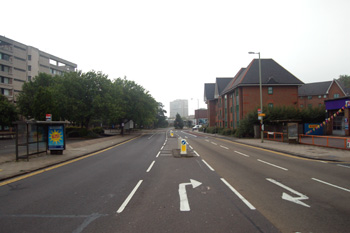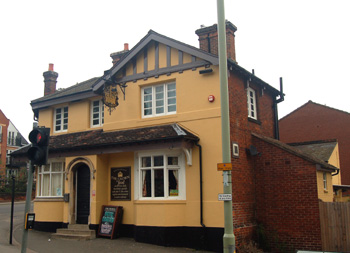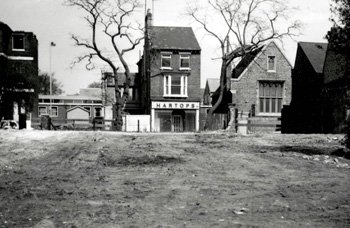Cauldwell Street Introduction

Cauldwell Street in July 2008
Even today Cauldwell Street is famed amongst older residents of Bedford for the large number of public houses it contained. The street was at its peak, in terms of alcohol, in 1890 when one could have a pint in any one of twelve hostelries: The Angel; The Black Diamond; The Black Horse; The Cherry Tree; The Ferry; The Gardeners Arms; The Haycock; The Hop Pole; The Olney Arms; The Shepherd and Dog; The Six Bells and The Wheatsheaf. Even in 1950 eight of these remained (The Angel, The Black Diamond; the Black Horse; The Cherry Tree; The Gardeners Arms; The Olney Arms; The Six Bells and The Wheatsheaf. As a counterbalance the road also included two Methodist chapels!
Today, of course, all of these have gone, the only licensed premises remaining into the 21st century was The Crown, on the corner of Cauldwell Street and Britannia Road, its address being Crown Place, Britannia Road. At the time of writing [2017] it has been closed for a few years and is being redeveloped.

The Crown Public House July 2008
All the other public houses in existence in 1950 were pulled down to make way for County, now Borough Hall, Bedford College, road improvements and other modern business units. Some of these establishments were of very long standing – notably The Angel, in existence, as The Griffin, by at least 1690 and The Cherry Tree by 1751. The Gardeners Arms was on the site of premises called, successively, The Blue Boar, The Anchor and The Golden Pot which dated to at least 1640. This is because Cauldwell Street has been occupied for a very long time. In 1967 Evelyn Baker of the Bedfordshire Archaeological Service carried out excavations on the site of 8 and 10 Cauldwell Street, demolished to make way for a modern development. This was adjacent to the site of The Gardeners Arms and 12th century pottery was found close to the street frontage. The site of 9 Cauldwell Street was excavated by Angela Simco in 1971 and two medieval pits were discovered. The site of Saint Mary’s Vicarage, 16 Cauldwell Street, was investigated by Evelyn Baker in 1973 and the remains of 10th to 12th century timber buildings were found, suggesting industrial use. Skeletons of some medieval dogs were also discovered. Other trenches at the site discovered inhabitation from the 18th century.
 The site of Saint Marys Rectory about 1973 [Z188/165 i]
The site of Saint Marys Rectory about 1973 [Z188/165 i]